- What is limescale & how does it form?
- Is limescale bad for you?
- How to prevent limescale
- Homemade limescale removers
- How to treat limescale
Limescale removal is possibly one of the hardest cleaning tasks we have to contend with.
Limescale is notoriously tricky to combat, especially in some parts of the country where hard water is more prevalent. Sometimes it's so bad it can seem almost impossible to remove.
Don't give up! Today we're not only showing you how to treat limescale, but also how to prevent it to make your weekly clean much easier. Ready to get rid of all those hard water stains and get your home looking spotless?
Then let's get started!
What is limescale & how does it form?
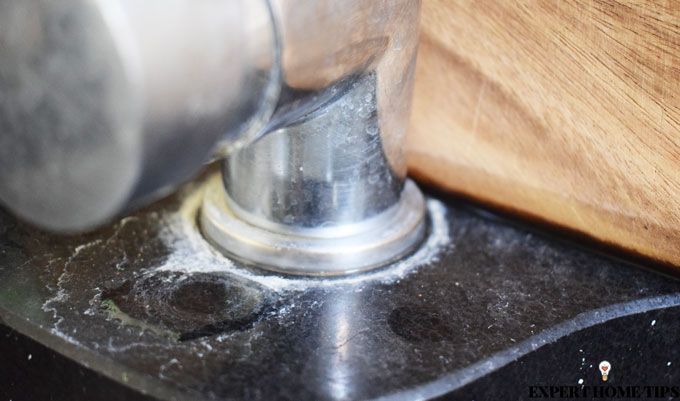
Limescale is a white, hard, sometimes chalky substance you find around taps, on shower screens and inside your kettle.
It's caused by hard water, which is created when rainwater percolates through sedimentary rocks, (like limescale and chalk) which are present in certain areas of the World. When it does, it collects calcium and magnesium carbonates, giving it a high mineral content which results in hard water.
Is limescale bad for you?
It may surprise you to hear that limescale can actually be beneficial for our health. The minerals it contains are those that the body naturally stores and uses for all sorts of processes.
However, it's not all good news - hard water can have negative effects too. Not only can it dry out your skin but it can also impact our homes.
Limescale around taps may look unsightly, but this isn't the real problem - it's hard water in appliances such as the dishwasher, washing machine and kettles you need to watch out for - it can even develop in water pipes and block them! Limescale will build up over time and prevent all sorts of appliances from performing at their best - it may even stop them from working completely if left untreated.
How to prevent limescale
We always advocate prevention methods as the first port of call for any household task. Whilst creased clothes and dirty worktops are hard to avoid, limescale is easier to prevent.
In order to prevent limescale, you need to soften the hard water that flows through pipes and out of taps in your home. There are a variety of ways to do this, depending on the object in question.
- Washing machine - add water softener in the form of powder or a liquid. Calgon is the most popular make and will prevent limescale build-up.
- Pipes - magnetic descalers clamp onto the outside of your pipes and prevent minerals from being able to form limescale.
- Taps and showerheads - carbon water filters can be applied which will remove water hardness as the flow passes through.
- Water supply - if you're serious about preventing limescale, you may want to consider investing in a water softener. This will protect your whole home from limescale, not only making cleaning easier, but also preventing appliance damage.
- Appliances - in areas where hard water is particularly bad, some people even opt to use only bottled-water in their kettles and irons to prevent limescale from forming.
Homemade limescale removers
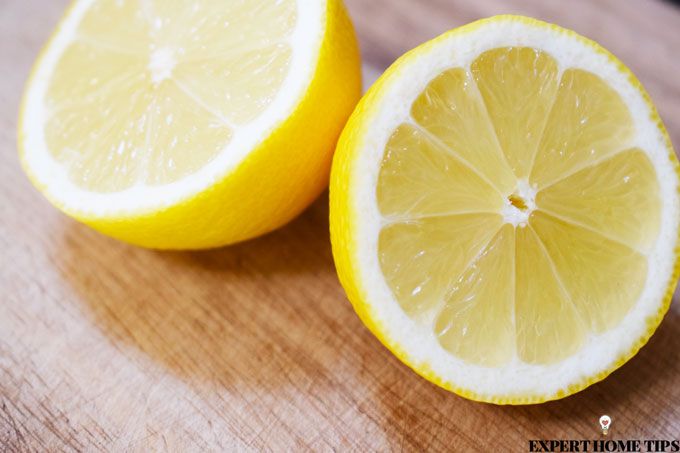
Is limescale taking over your home? Don't fret, it is treatable.
Limescale removal can be hard, especially without the right products and tools. It may surprise you to hear that some of the best things to use to treat it are 100% natural acids, which happen to also be super cheap - good news for your budget!
Some of the best limescale treatments are:
- Lemon - contains citric acid which breaks limescale down.
- Vinegar - diluted acetic acid attacks limescale.
- Bicarbonate of soda - when teamed with vinegar, baking soda produces a fizzing reaction that can break down almost anything, including limescale.
- Coke - contains phosphoric acid which can not only remove rust, but also limescale.
How to treat limescale
Now we're going to show you how to tackle the places most prone to limescale using the products mentioned above.
Stick with us, we promise it's easy!
How to remove limescale from the toilet bowl
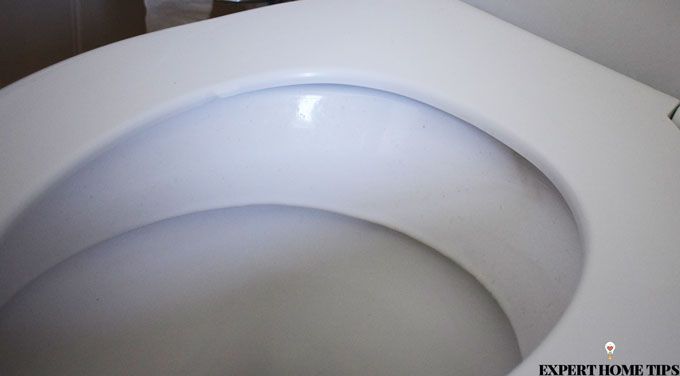
Think about how many times your toilet is used throughout the day - that's an almighty amount of flushing! Even when the toilet isn't in use, if you live in an area with hard water, minerals can build up around where the water level lies and create stubborn limescale.
Here's how to remove limescale from the toilet bowl using:
- Vinegar - pour undiluted vinegar into the toilet bowl and leave for a few hours before scrubbing the toilet bowl thoroughly with a toilet brush and flushing.
- Coke - Coca Cola is often used to remove toilet bowl limescale. To try it, simply pour a litre of coke down the toilet, leave for an hour, then scrub the bowl. Flush, and there should be no traces of limescale left.
Next, find out if you should be flushing hair down the toilet. It's quite surprising!
How to remove limescale from a shower head
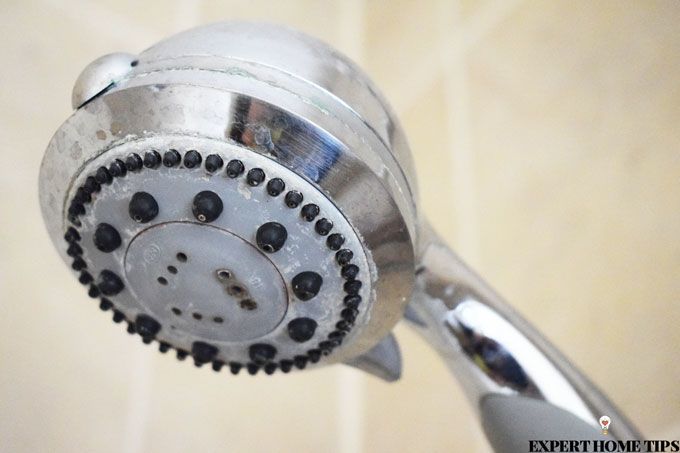
The shower head is another culprit when it comes to limescale buildup. This is because water often sits in the holes even after the shower has been turned off, giving limescale chance to form.
Not only is this unsightly, but it will make your showerhead less powerful. In serious circumstances, this could cause pressure to increase in the pipe too.
You can descale your shower head using:
- Lemon - cut a lemon in half, and rub the fleshy side directly onto the showerhead. Leave for an hour, then scrub the shower head, including the holes, using a toothbrush to unclog them.
- Vinegar - an almost effortless way of getting your showerhead completely limescale-free is using another cupboard ingredient, vinegar. Fill a small food bag with vinegar and fasten it around your showerhead using string or an elastic band. Leave overnight and wipe clean in the morning.
How to clean limescale from taps
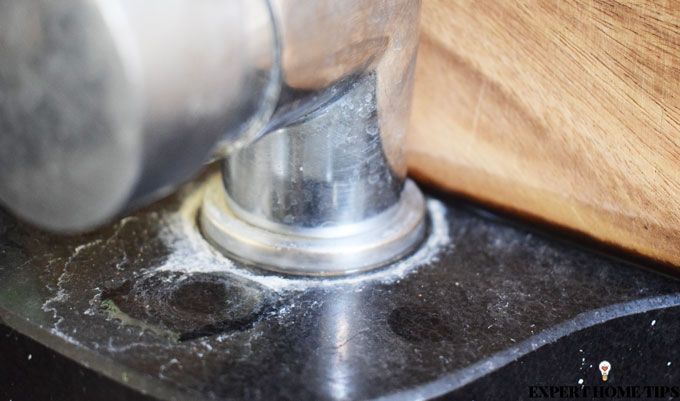
Are your taps surrounded by limescale? Drips and spillages are sometimes hard to keep on top of, and can soon lead to ghastly hardwater stains.
Luckily, cleaning them is relatively simple, and you don't even need to invest in harsh chemicals or spend hours scrubbing.
Natural methods for cleaning limescale from taps include:
- Vinegar - similarly to your showerhead, vinegar is ideal for treating limescale in and around taps as it can work its way into all those nooks and crannies. To use, pour into a spray bottle and spritz liberally onto taps, ensuring the entire surface area is covered. Leave for 30 minutes before scrubbing clean - the limescale should come straight off.
- Lemon - lemons can also be used to remove limescale on taps. Cut a lemon in half and rub the flesh side onto limescaled areas. Leave for 30 minutes then scrub clean.
How to remove limescale from the shower, sink & bath
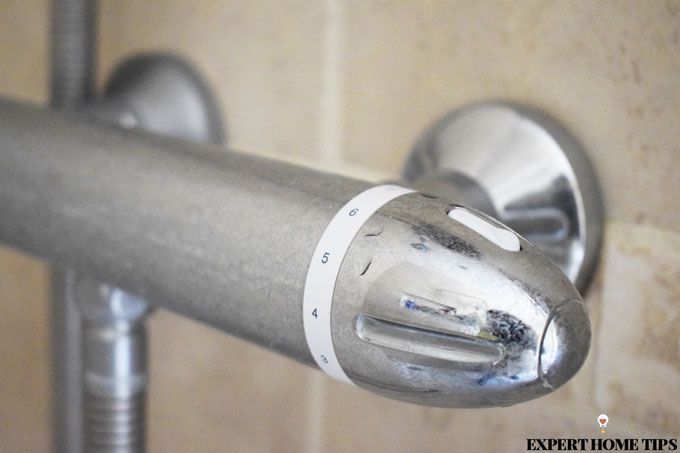
Limescale has a tendency to form around plugholes in the shower, sink and bath. It can also form on the shower walls and screen as hard water dries there.
The best way to remove limescale from the shower, sink & bath is using:
- Bicarbonate of soda & vinegar - combine 2 parts bicarbonate of soda with 1 part white vinegar to make a paste and apply to areas with hard water stains. Leave for 10 minutes then scrub vigorously with the abrasive side of a sponge to remove.
If it's too difficult to clean, you may want to consider resealing your shower door, especially if it hasn't been done in the last 5-10 years.
How to remove limescale from your kettle
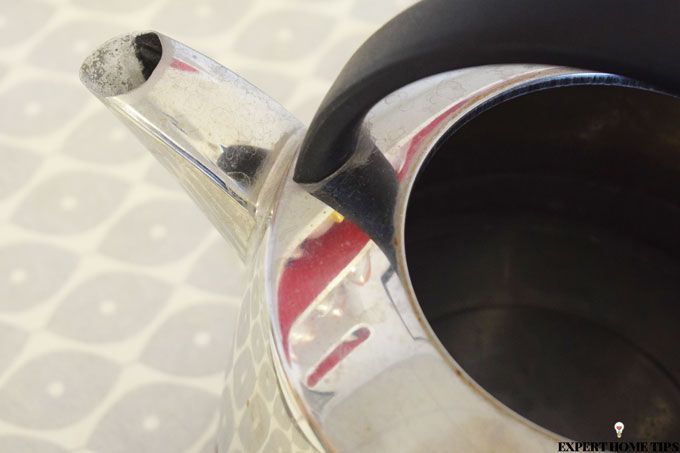
Over time, limescale can build up in your kettle and prevent it from working, especially if you're a bit of a tea-a-holic like us! Not only this, but you may also end up with hard water flakes in your tea and coffee which is not a nice addition.
To remove kettle limescale, use:
- Vinegar - fill the kettle up with equal parts water and vinegar and leave for an hour. Boil, then empty to leave your kettle sparkling clean.
How to get rid of limescale in your iron

Your iron works by heating up to a high enough temperature to turn water into steam. If you live in an area with hard water, limescale can form both in the tank and also in the steam vents, preventing your iron from working as efficiently. It can also lead to mineral deposits on clothes, which could end up ruining them.
To remove iron limescale, use:
Vinegar - mix equal parts distilled water and white vinegar and fill 1/3 of your iron's water reservoir with the mixture. Turn your iron on to a medium heat, and let it stand and steam until all the water has evaporated. Repeat the process with distilled water, turn off and leave to cool, then wipe the plate with a clean cloth.
Remove limescale from your washing machine
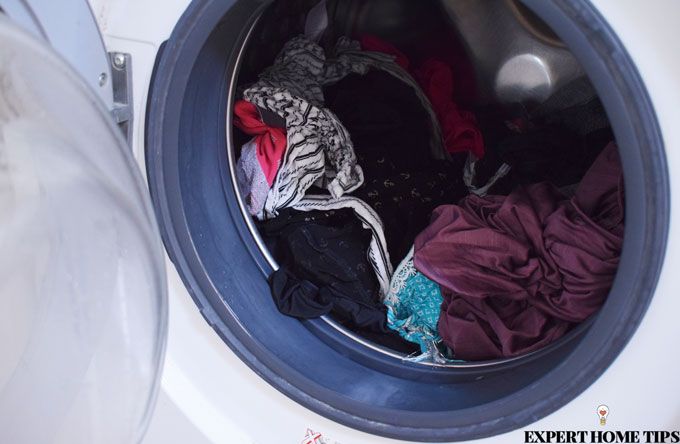
You may not be able to see the limescale in your washing machine, but that's not to say it isn't there. If you don't use any kind of water softener in your washes, chances are yours could do with some TLC.
To descale your washing machine, use:
Baking soda and white vinegar - begin by running a hot water cycle using the highest temperature possible. Add 1 cup baking soda to the detergent drawer once the machine has filled with water and finish the cycle. Wipe down the drum, then repeat with distilled white vinegar.
How to descale a dishwasher
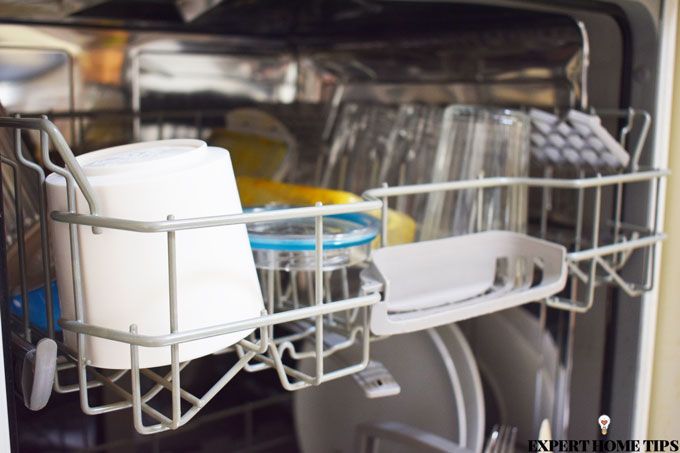
If your dishes aren't coming out of the dishwasher quite as clean as you'd like, this could be an indication of a blockage in the spray arms - you may even have spotted a limescale build-up on them.
It's important to descale your dishwasher regularly, especially if you live in an area with particularly hard water.
Descale your dishwasher using:
Vinegar - simply run your dishwasher on the hottest cycle possible, and after 30 minutes, add a 2 cups of distilled white vinegar. Once completed, run another hot cycle to finish the job.
Who knew getting your home limescale-free was so easy? And all with natural products too! What's your favourite way to tackle limescale? Let us know in the comments below.
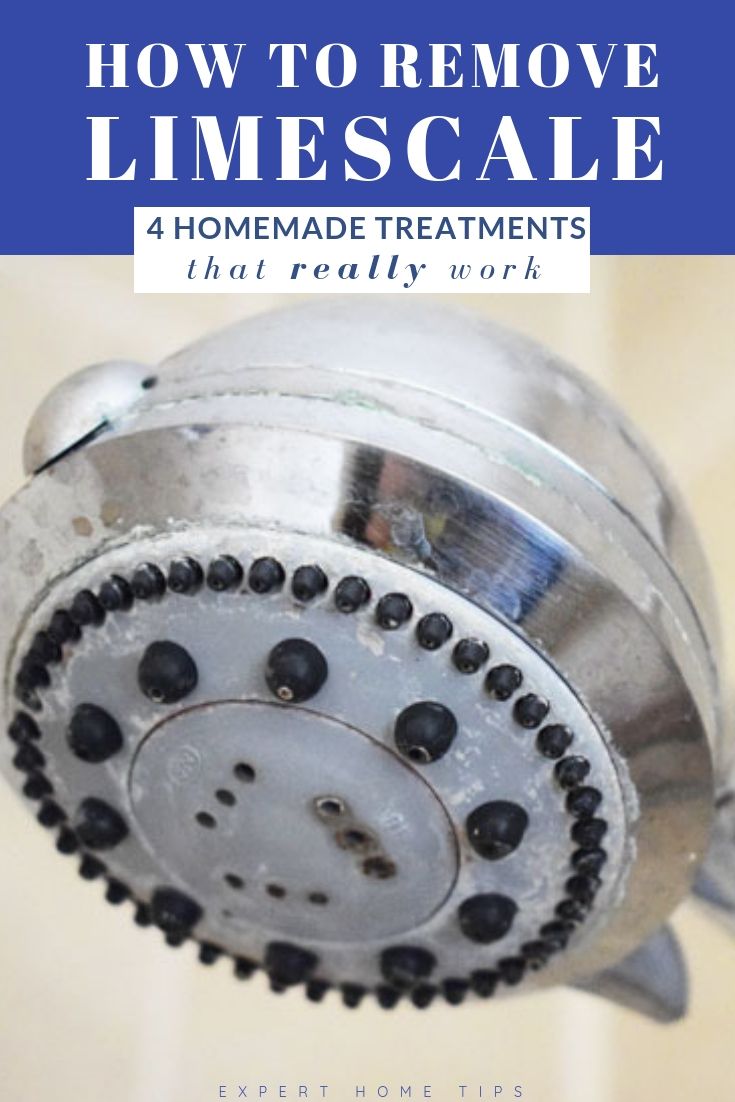
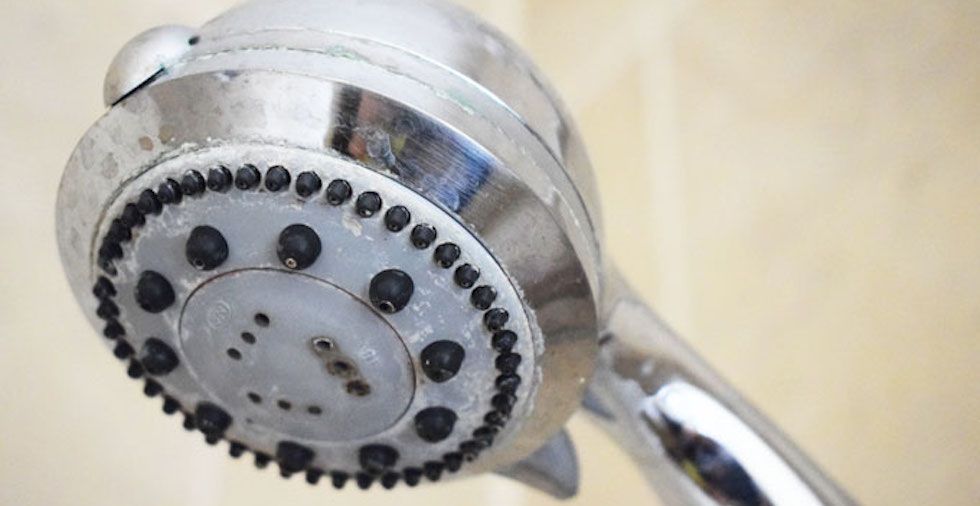
I have a black mould around the rubber of the washing machine door. I've tried lemon, bico of soda, vinger, salt and still can't get rid of it. Have you any suggestions I'm so very desperate to get rid of it, its driving me mad! I'd be very grateful for any suggestions or help advice of where or what I can do. Thank you very much, look forward to hearing from you at your earilist time very grateful for any tips and help. Thank you once again
Hi Tony! Have you tried a mould and mildew spray? They're really powerful, so if you've given the natural methods a go, this could be your only hope. I've used the Astonish brand one in my bathroom and it worked wonders on the tiles and ceiling. I'm sure it would work on your washing machine. Be sure to follow instructions on the bottle. Before washing clothes in the machine after treatment, you should run an empty cycle on a long and hot setting. To prevent mould coming back, try keeping the door open between loads so that the inside can dry properly. You can join our Facebook cleaning group (https://www.facebook.com/groups/641539392883868/?ref=br_rs) for more advice.
A cheaper version of Calgon as a water softener, especially in your washing machine is soda crystals, a pack costs less than £1. In Savers maybe 65p. Put some in the detergent drawer, save money & get better wash results. You can also get it in a liquid form which you can pre-treat stains before washing.
Great tip, Heather!
Hi Joanne - When you mention vinegar in all the tips, I presume it is always white vinegar (or distilled when necessary). Such a shame to use, for instance, red wine vinegar on cleaning! And I don't think it would do the job as well as white.
Hi Sandy! Yes, it would be white vinegar.
Hi I have green algae on my decking how can I get rid off quickly please thank you.
Hi Sharon! Have you tried a commercial deck cleaner? Something like Ronseal should do the trick. You can buy it from most DIY shops or online.
Instead of using Calgon in the washing machine, I use Soda Crystals in the detergent drawer, just as effective and a lot cheaper.
Thanks for sharing, Rosie!
Hi I have a steam generated what can I put in to stop it from clogging the vents in my iron and is it wise to put it in the water tank
To prevent clogging in the vents of your steam iron, use only distilled or demineralized water, as the manufacturer recommends. Do not put any substances in the water tank unless specifically instructed by the manufacturer.
Do any of these cleaning items - lemon, vinegar etc- affect the plating on taps, such as brass, gold or chromium plate? Thanks
Lemon, vinegar and coke are acidic and can corrode or fade the plating on taps if left on for too long. Baking soda is abrasive, so it should also be used with care.
Hi Joanne - I have heavy limescale stains from a overflow pipe on an outside wall. How would you remove them? Thanks!
To remove heavy limescale stains from an outside wall caused by an overflow pipe, you can use a vinegar solution or a mixture of lemon juice and baking soda. Alternatively, a commercial limescale remover can be used, following the instructions carefully and testing on a small area first.
Can you tell me how much white vinegar I should use in my washing machine please.
To remove the limescale in your washing machine, add one cup of white vinegar to the detergent compartment and run a normal cycle with hot water. Adding a half-cup of baking soda to the drum gives extra cleaning power.
How about ideas for cleaning shower screens that have limescale deposits? I struggle to get mine crystal clear. Thanks.
Viakal is a fantastic cleaning product to try!
What a wonderful site, thank you! Does the above remedy work for removing limescale from glass shower doors, as well?
We're glad you think so! You can remove limescale from glass shower doors by mixing equal parts white vinegar and water and applying it on the doors, and then scrubbing it with a brush or sponge. Or you can use a commercial limescale remover specifically formulated for glass surfaces and follow the manufacturer's instructions.